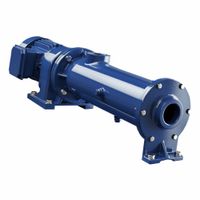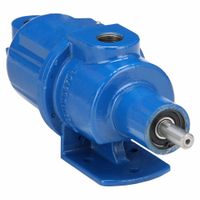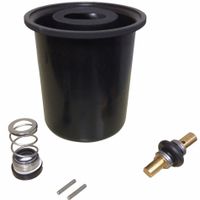Progressive cavity pumps, also known as screw pumps, are versatile and used across various industries due to their ability to handle a wide range of fluids. Common applications include:
1. **Oil and Gas Industry**: Used for transferring crude oil, multiphase mixtures, and other viscous fluids. They are ideal for handling high-viscosity liquids and can manage the presence of gas and solids.
2. **Wastewater Treatment**: Employed in sludge handling and dewatering processes. They efficiently pump thick sludge, slurries, and other waste materials with high solid content.
3. **Food and Beverage Industry**: Suitable for transporting delicate and shear-sensitive products like fruit juices, dairy products, and dough. Their gentle pumping action preserves the quality and texture of the products.
4. **Chemical Industry**: Used for dosing and transferring chemicals, including corrosive and abrasive substances. They provide precise flow control, which is crucial for chemical processing.
5. **Mining and Mineral Processing**: Handle abrasive slurries and thick pastes. They are used for dewatering, tailings transfer, and transporting mineral concentrates.
6. **Pulp and Paper Industry**: Transport pulp, paper stock, and other fibrous materials. Their ability to handle high-viscosity fluids makes them suitable for this sector.
7. **Construction**: Used for pumping concrete, grout, and other construction materials. They can handle the abrasive nature of these materials effectively.
8. **Pharmaceuticals and Cosmetics**: Ideal for handling viscous creams, gels, and ointments. They ensure hygienic and contamination-free transfer of sensitive products.
9. **Agriculture**: Used for irrigation, manure handling, and transferring animal feed. They can handle a variety of agricultural fluids, including those with solid content.
10. **Renewable Energy**: In biogas plants, they are used for feeding biomass into digesters and handling the resultant slurry.
Progressive cavity pumps are favored for their ability to maintain a consistent flow rate, handle high-viscosity fluids, and manage fluids with solid content, making them indispensable in these applications.


